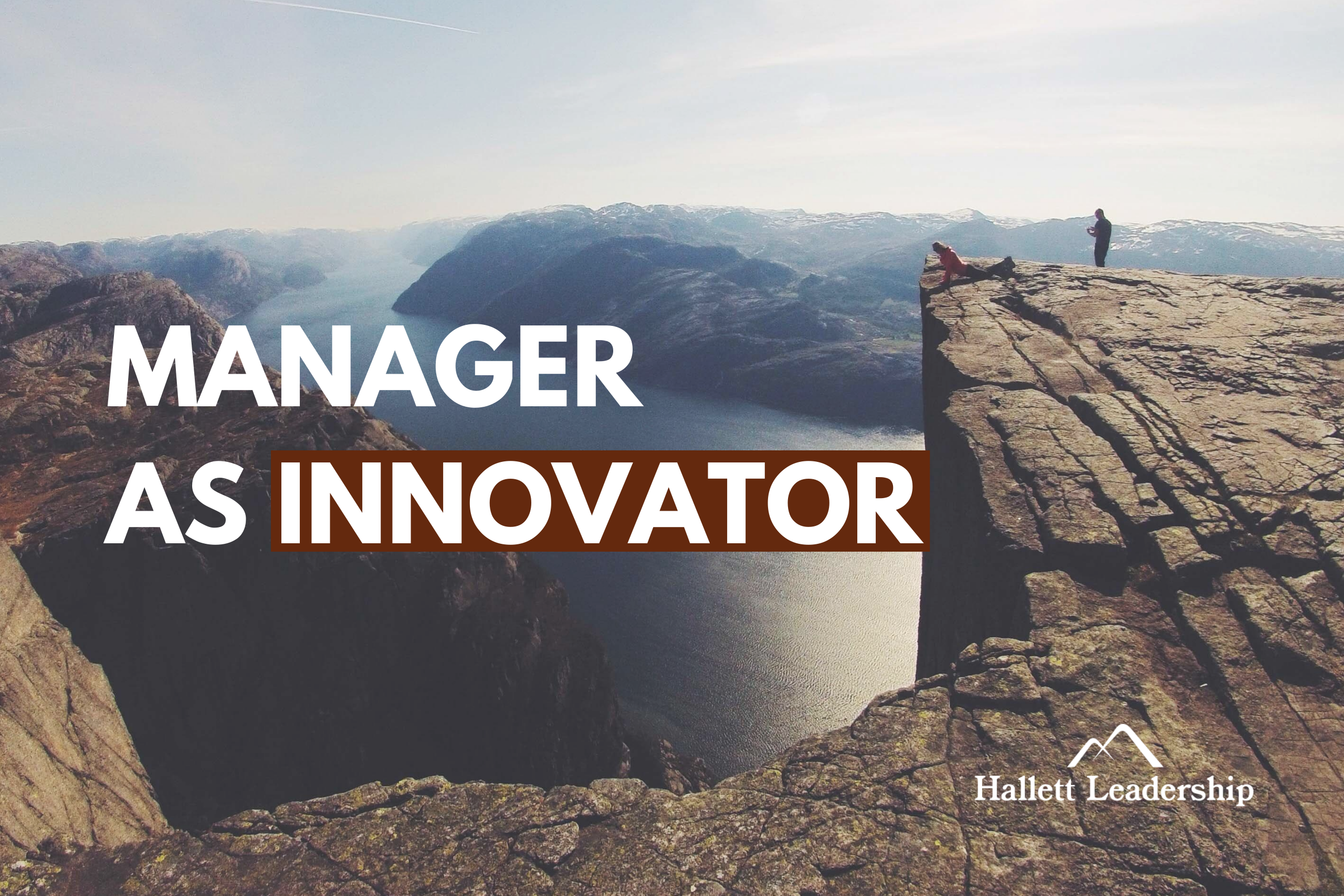We have frequently heard senior leaders express a wish that their workforce was more “entrepreneurial” and “innovative.” That their people more proactively sought out solutions to problems, established better processes for working together, and contributed in a robustly collaborative culture. That people volunteered ideas and didn’t wait around so much to be told what to do.
We have written at length about how to create such cultures inside of companies. Today we explore what an innovative workforce looks like, and how it functions. As with most conversations about the functioning of a workforce, our point of focus inevitably gets drawn to the middle management tier that oversees day-to-day operations in the respective departments of an organization.
An innovative workforce, by definition, must have innovative middle management.
So just what, exactly, does the middle manager as innovator look like? Especially when the generally held image of the middle manager can be quite far from the image of very public innovative business leaders (Steve Jobs, Elon Musk, Richard Branson, etc).
Following our aim to help our clients get increased results through their people, we propose that the innovating middle manager isn’t necessarily the creator of new ideas, but a dynamic group facilitator devoted to eliciting innovative ideas from their work team. We know from experience that the best ideas exist in the hearts and minds of our people. The innovating manager’s role is to create an environment for those ideas to come forward.
How Fox Became Nimble and Versatile
It was around 2008 when the world changed in the entertainment industry. In the midst of the US economic crisis, video on demand became popular, putting the industry’s thriving DVD business in jeopardy.
At that time, the FOX studio began to understand the real need to develop a digital supply chain. A means for theatrical, home entertainment, and tv distribution to get their digital content to different media outlets, in different regions and territories of the planet. Each media outlet, region, and territory frequently had different digital requirements for the content we were delivering. FOX had so many territories that it couldn’t regulate everything bureaucratically.
Compounding matters was the fact that up until this point, the various divisions of the studio ran more or less independently. Unless we actively found a way to collaborate with each other on this digital supply chain, we risked having a situation where each individual division created its own digital supply chain – which in the final analysis would have been incredibly inefficient.
The FOX chairman approached me and said: We’re doing all these video-on-demand deals around the world… I expect that you’re going to be able to deliver our product digitally.
At the time, I was Chief Financial Officer and I was entrusted to lead this initiative. I knew we needed to be agile and versatile in order to innovate and create a new supply chain. To get the broadest perspective possible, I pulled together a task force of representatives from each of the studio’s stakeholder divisions.
We met regularly to establish the nature of what we needed in a digital supply chain, and to identify our key guiding principles. The key overriding objective was to produce a single digital master for each movie or television episode that could be used for all distribution platforms.
To keep the best ideas flowing, we used open communication and built an environment of mutual trust and respect. This approach allowed us to get the most out of our brainstorming sessions. At every stage of the process we asked:
How do we do this?
What’s the best way?
As the task force was determining the best path forward, members were continually communicating with their own divisions to ensure the digital supply chain would satisfy the specific detailed needs of their division.
As it turned out, the people of Fox were successful at creating a new digital supply chain. We were able to brainstorm and negotiate with vendors to adopt our protocols, dropping the number of delivery formats from 24 to 2.
In addressing the chairman’s challenge / opportunity, I pulled together people from every division in order to brainstorm the best solution. All I had to do was create the right environment, not devise the solution myself.
Conclusion
A final word on innovation: if you want your managers to facilitate innovation, then you need to create an environment that’s safe. True brainstorming where all ideas are considered. No “bad” ideas. No shaming people, or intimidating them. Instead, the aim should be for your people to collaborate and build out ideas, emerging with the best thinking of the group.
While every company’s situation is unique, we have found that initiating and sustaining a culture characterized by openness, collaboration, creativity and innovation, occurs in a repeatable sequence. If you are ready to explore the possibility of developing collaboration and innovation at your company, feel free to get in touch with us.





